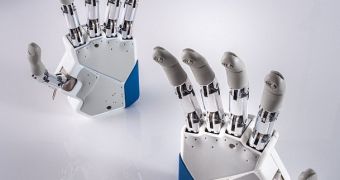Later this year, a team made up of several Italian doctors is to fit a patient in Rome with a bionic hand. What makes this transplant stand out amongst other such similar surgeries is the fact that this bionic hand will allow the individual receiving it to also regain the ability to “feel” sensations.
The researchers working on this project explain that, up until now, the artificial limbs attached to various amputees only made it possible for them to use their brain in order to make their new arms and/or legs move.
However, restoring their sense of touch was pretty much out of the question, meaning that sensations such as pressure seemed to have been lost forever.
According to Daily Mail, the bionic hand set to be transplanted on said patient in Rome, whose identify is yet to be disclosed, does not settle for just picking up brain signals and turning them into movements.
Quite the contrary, this bionic hand can also provide sensory feedback, thus making it easier for patients to accept their new limb and make use of it on a regular basis.
Commenting on this upcoming surgery, Dr. Silvestro Micera, currently working with the Swiss-based Ecole Polytechnique Federale de Lausanne, argued as follows:
“This is real hope for amputees. It will be the first prosthetic that will provide real-time sensory feedback for grasping.”
“It is clear that the more sensory feeling an amputee has, the more likely they will get full acceptance of that limb. We hope that one day it will be embedded in the arm and the user will just forget it is there,” Dr. Silvestro Micera went on to add.
The same source informs us that, courtesy of the bionic hand's developers using state-of-the-art technologies when manufacturing this innovative artificial limb, the patient will receive sensory feedback from all their fingertips, their thumbs, their palm and their wrist.
“We have refined the interface, so we hope to see much more detailed movement and control of the hand. It is intended to be as lifelike as possible,” Dr. Silvestro Micera wished to emphasize.

 14 DAY TRIAL //
14 DAY TRIAL //